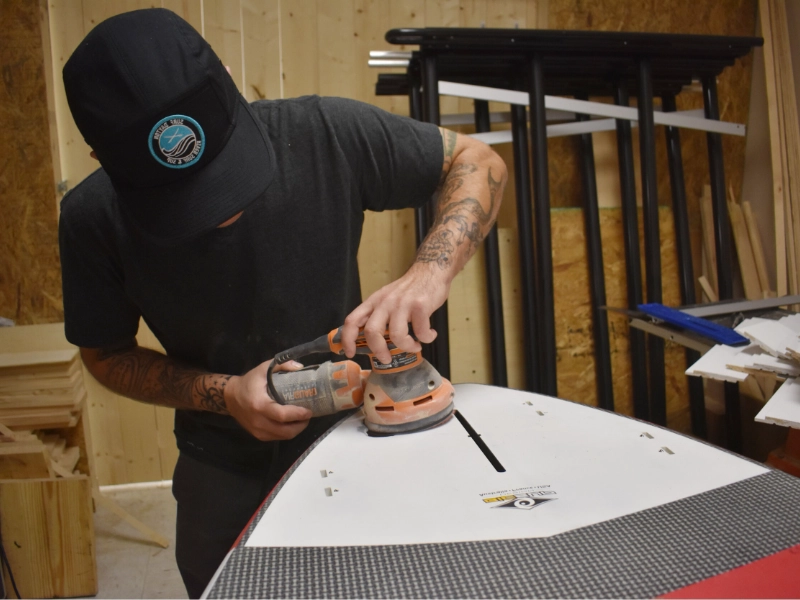Investing in a surfboard is a significant commitment for any surfer, making it vital to keep it clean and well-maintained. Here’s a comprehensive guide to surfboard care and maintenance, covering everything from rinsing to basic ding repairs. After each surf session, it’s essential to rinse your board with fresh water to remove salt and sand. Be sure to dry it thoroughly before storing. Keep your board out of direct sunlight to prevent warping.

 Surfboards with removable fins have fin boxes (made of plastic, aluminum, or fiberglass) where the fins are attached. Keeping these areas clean is crucial.
After each session, rinse the board thoroughly, especially the fin box and any fin tab holes. This helps remove saltwater, which can corrode and weaken the materials of your surfboard.
Proper storage also plays a significant role in extending your surfboard's lifespan. Store it in a cool place, away from direct sunlight.
Nicks and dings in the fins and fin boxes can create break-off points that lead to turbulence and reduced speed. Fixing these issues is straightforward—lightly sand the affected areas with medium to fine-grit sandpaper.
Surfboards with removable fins have fin boxes (made of plastic, aluminum, or fiberglass) where the fins are attached. Keeping these areas clean is crucial.
After each session, rinse the board thoroughly, especially the fin box and any fin tab holes. This helps remove saltwater, which can corrode and weaken the materials of your surfboard.
Proper storage also plays a significant role in extending your surfboard's lifespan. Store it in a cool place, away from direct sunlight.
Nicks and dings in the fins and fin boxes can create break-off points that lead to turbulence and reduced speed. Fixing these issues is straightforward—lightly sand the affected areas with medium to fine-grit sandpaper.
 Surf wax is essential for providing the traction needed to stay on your board while riding waves. Over time, wax can accumulate dirt and lose effectiveness, so it’s important to reapply it regularly. Start by softening your wax comb or scraper by running it over the deck of your surfboard until it’s clean.
Once the wax is softened, apply it to the deck of your board in circular motions to distribute it evenly. There are various methods for applying wax, but the key is to rub gently to avoid smearing, which can reduce its grip.
After the circular application, add diagonal lines of wax across the deck a couple of inches apart. This creates small traction bumps for better grip. Continue this process until the entire deck is covered.
Surf wax is essential for providing the traction needed to stay on your board while riding waves. Over time, wax can accumulate dirt and lose effectiveness, so it’s important to reapply it regularly. Start by softening your wax comb or scraper by running it over the deck of your surfboard until it’s clean.
Once the wax is softened, apply it to the deck of your board in circular motions to distribute it evenly. There are various methods for applying wax, but the key is to rub gently to avoid smearing, which can reduce its grip.
After the circular application, add diagonal lines of wax across the deck a couple of inches apart. This creates small traction bumps for better grip. Continue this process until the entire deck is covered.

Regular inspections of your surfboard are crucial to ensure it remains in good condition. This practice helps identify damage early and prevents it from worsening. Look for dings and cracks, particularly around the fin boxes and leash plug areas. Run your hands over the entire surface to feel for soft spots or signs of delamination. Delamination occurs when part of the surfboard collapses due to excessive pressure, often in areas where surfers grab or knee paddle. While slight delamination is normal wear and tear, severe cases can be dangerous and require extensive repairs with fiberglass and resin. It’s advisable to avoid purchasing a board with significant delamination damage.